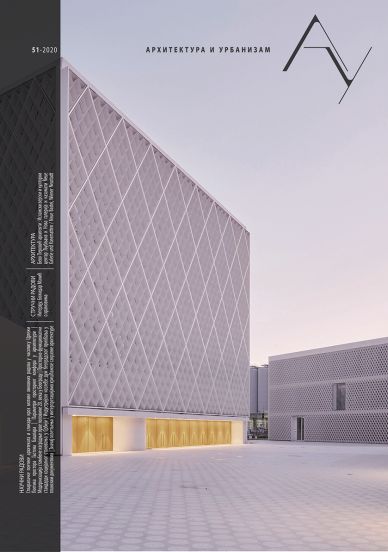Industrial heritage along belgrade waterfront in planning documents / Индустријско наслеђе дуж београдског приобаља у планским документима
Abstract
The City of Belgrade is situated at the confluence of the Sava and Danube. Accordingly, this geographical position has strongly shaped Belgrade’s strategic and geopolitical significance, as well as its identity. In the last two decades, the development of several mega-projects in the area of Belgrade waterfront has had a negative impact on the cultural heritage of Belgrade and its historical cityscape, affecting its urban morphology and typology. The reason for this is that urban regeneration is most often driven by economic interests, while the preservation of meaning and the memory of a place are neglected. Along with these processes, several civic initiatives have emerged that aim to prevent damage to the built heritage and to indicate the need for stronger involvement of citizens in the city’s planning and development processes. In order to discontinue the tendency of being driven by economic interest and demonstrate a will to achieve further sustainable development, it is necessary to redefine the procedure for protecting valuable cultural heritage. This could be achieved by creating a new approach to protecting cultural heritage in the domain of urban design and planning, taking into account all the values, tradition, authenticity and identity of a place. Accordingly, the paper will focus on the issues of protecting Belgrade’s waterfront heritage, its historical and urban context, its genesis, and its cultural and architectural characteristics. Furthermore, the possibilities for different approaches to the presentation and modern utilization of the abandoned and ruined waterfront heritage will be investigated, in order to define new, common procedures that will be in line with city development goals, citizen expectations and heritage protection measures.
References
Dajč, H. (2012). Uspon i degradacija Savskog priobalja, Limes Plus. Identitet Beograda, no. 1-2, pp. 97-112.
Detailed regulation plan for the part of the central zone - spatial unit marina "Dorćol" (2005)
Detailed regulation plan for part of the Ada Huja area (2012)
Đukić, A., Vukmirović, M., Vaništa Lazarević, E. (2014). Planski okvir, projekti, konkursna rešenja i vizije za uređenje Savskog amfiteatra. U: Izgradnja, 3-4, str. 103-121.
General Urban Plan of Belgrade (2016)
Institute for the Protection of Cultural Monuments of the City of Belgrade. "Milan Vapa’s Paper Mill." http://beogradskonasledje.rs/kd/zavod/savski_venac/fabrika_hartije_milana_vape.html, 2012a. (accessed April 10, 2020).
—. "Railway Station." Cultural Propreties of Belgrade. 2012b. http://beogradskonasledje.rs/kd/zavod/savski_venac/zeleznicka_stanica.html (accessed April 10, 2020).
—. "State Print-shop Building." Cultural Propreties in Belgrade. 2012c. http://beogradskonasledje.rs/kd/zavod/savski_venac/zgrada_drzavne_stamparije.html (accessed April 10, 2020).
—. "Steam Mill." Cultural propreties in Belgrade. 2012d. http://beogradskonasledje.rs/kd/zavod/savski_venac/parni_mlin.html (accessed April 10, 2020).
Mihajlov, S. (2011). Nastanak i razvoj industrijske zone na desnoj obali Dunava u Beogradu od kraja 19. do sredine 20. veka (The origin and development of the industrial zone on the right bank of the Danube in Belgrade from the end of 19th to the midle of the 20th century). Nasleđe, no. 12, pp. 91-116.
Nikolić, M. and Roter Blagojević, M. (2018). Potentials of the Belgrade Industrial Heritage in the Context of Tourism Development. In: HERITAGE for PLANET EARTH, Proceedings ofthe 20th General Assembly of the International Experts of the Romualdo DelBianco Foundation (pp. 93-99). Florence: Romualdo DelBianco Foundation.
Nikolić, M., Drobnjak, B. and Kuletin Ćulafić, I. (2020). The Possibilities of Preservation, Regeneration and Presentation of Industrial Heritage: The Case of Old Mint “A.D.” on Belgrade Riverfront. Sustainability 12 (13), pp. 1-36.
Plan of the General Regulation of the Construction Area of the Local Self-government unit - City of Belgrade (2016)
Plan of detailed regulation of the spatial unit Kosančićev venac (2007)
Plan for detailed regulation of the block between Dunavska and Tadeusa Košćuškog streets and and Vojvoda Bojovic Boulevard (2012)
Regional Spatial Plan of the Administrative Area of the City of Belgrade (2011),
Spatial plan of the special purpose area for the development of part of the Belgrade coastal area - the Sava riverfront area for the project "Belgrade Waterfront" (2015)
The Nizhny Tagil charter for the Industrial Heritage. July 2003, https://www.icomos.org/18thapril/2006/nizhny-tagil-charter-e.pdf (accessed April 10, 2020).
Vukmirović, M. (2020). Belgrade’s Waterfront Revitalization. In: Belgrade. The 21st Century Metropolis of Southeast Europe, by Biljana Arandelovic and Milena Vukmirović, (pp. 145-167). Springer International Publishing.
Vuksanović-Macura, Z. (2015). Bara Venecija i Savamala - železnica i grad (Bara Venecija and Savamala: The railway and the city. Nasleđe, no. 16, pp. 9-26.
Copyright (c) 2020 Arhitektura i urbanizam

This work is licensed under a Creative Commons Attribution-ShareAlike 4.0 International License.

